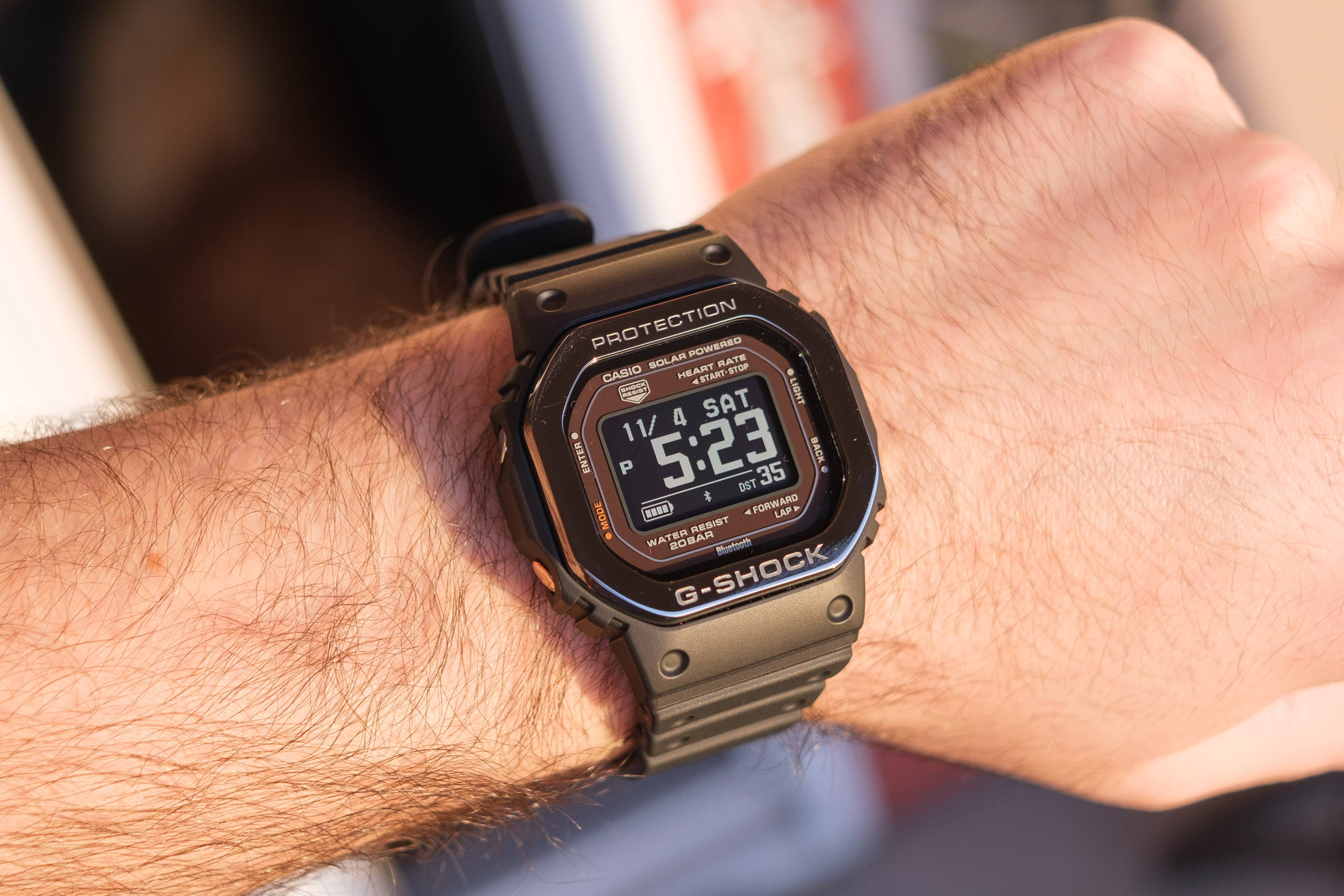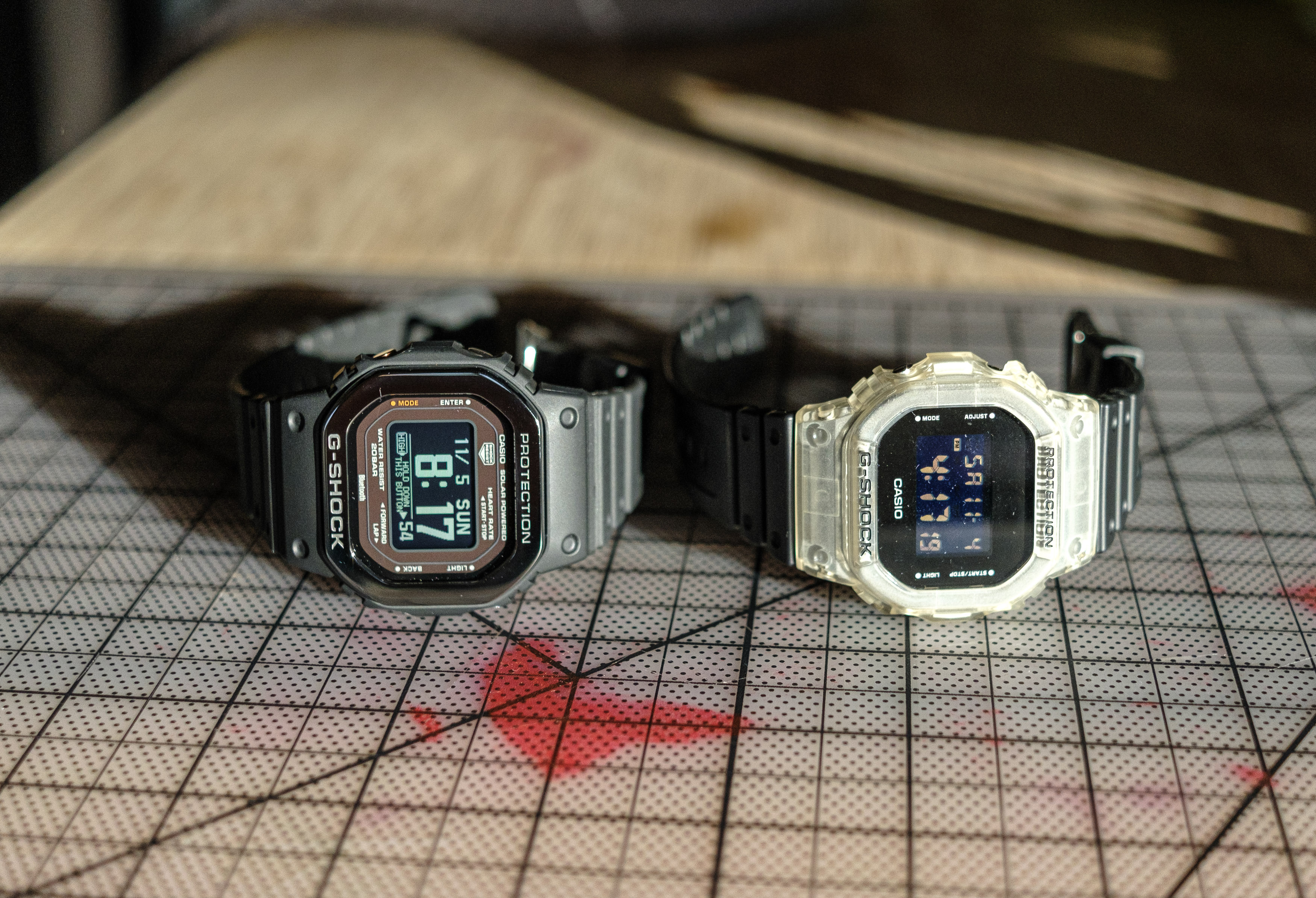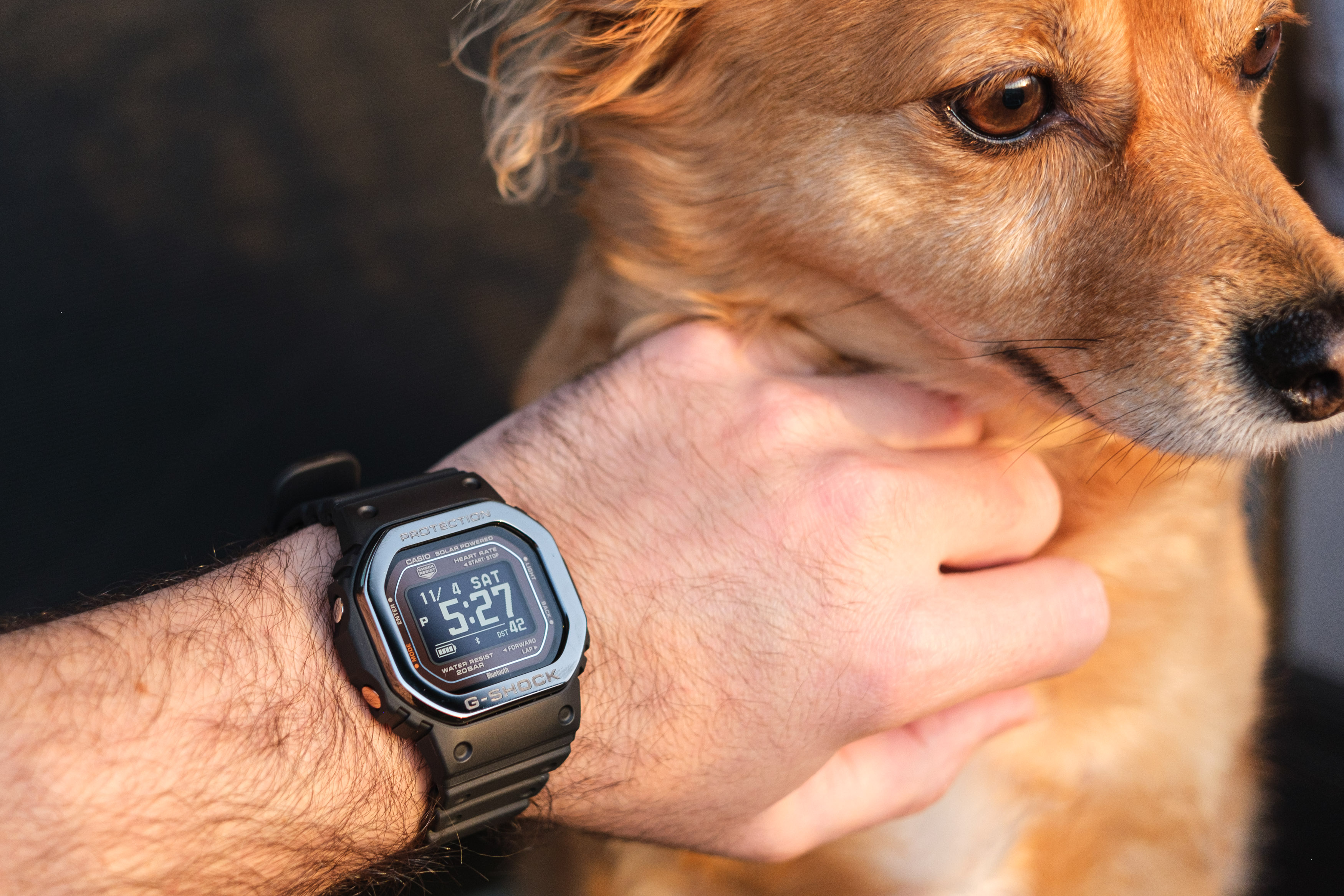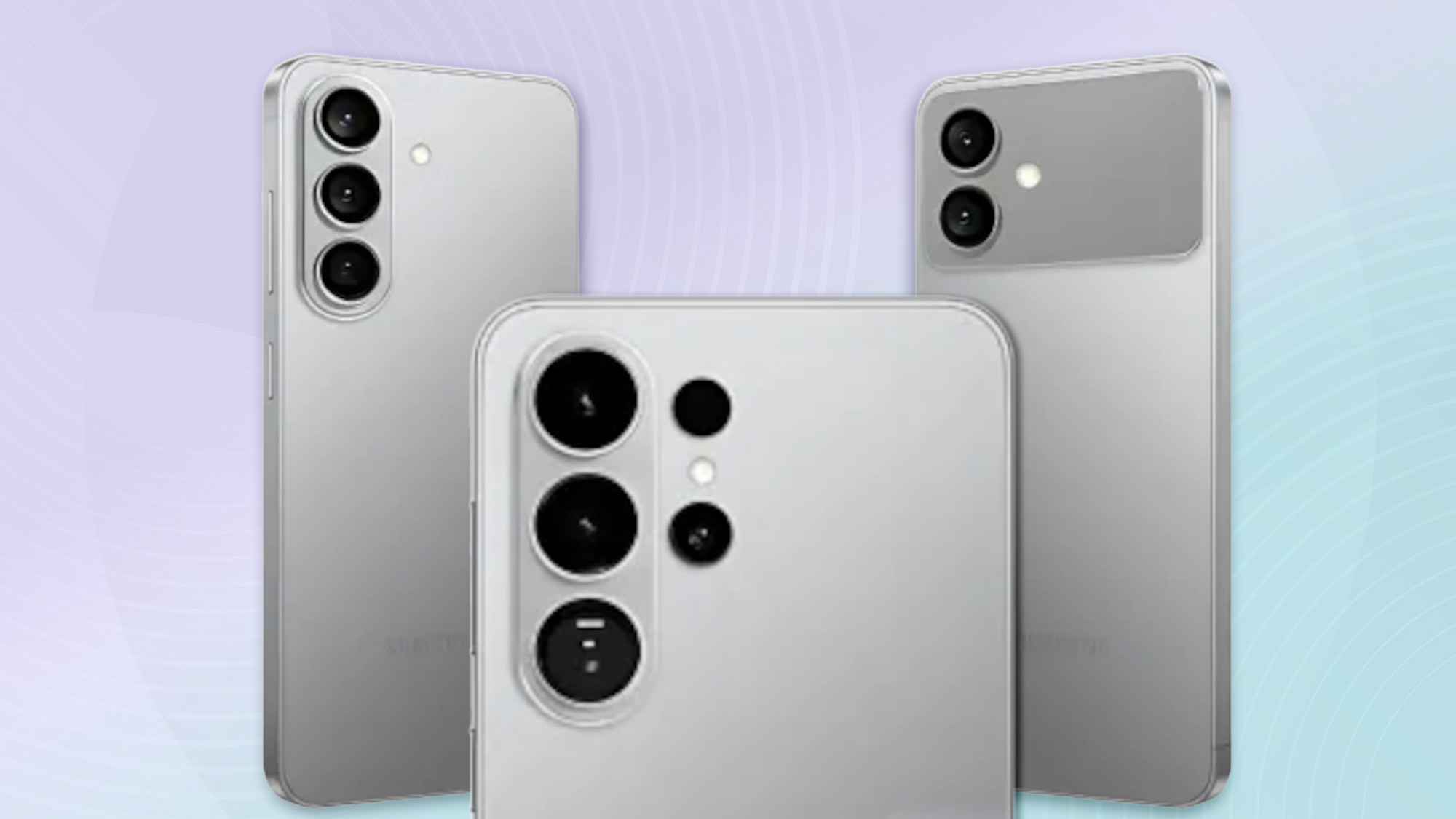I spent a weekend with the G-Shock smartwatch — 7 things that surprised me
This fashion-forward, fitness-focused G-Shock Move may never leave my wrist

I have a confession. I love Casio G-Shock watches and have ever since I received my first DW5600 during my awkward teenage years — I wore it until the rubber began to disintegrate. So, naturally, when G-Shock’s line of fitness-focused smartwatches hit the scene, I was intrigued: Classic Casio charm meets modern smartwatch convenience? Sign me up.
My opportunity to take the new Casio G-Shock Move DWH5600MB-1 smartwatch for a spin finally came this past weekend. And after spending roughly 72 hours wearing it, with 15,000 steps walked, I have more than a few impressions, which will be included in a forthcoming review. In the meantime, what follows are the seven things that surprised me most about the G-shock Move smartwatch.
It’s larger than I expected
This shouldn’t have come as a surprise. But I neglected to read the official spec sheet, so, it was. Casio’s Bluetooth-enabled smartwatches are a good bit larger than their standard “dumb” DW5600 G-shock watches. For example, the former is roughly 2.0 mm longer, 0.7mm wider and almost 3mm thicker than the G-Shock model I wear often. It’s also 11g heavier. That said, the G-Shock Move fits my somewhat dainty 7-inch wrist fairly well (i.e. it wears smaller than it is), despite sitting a tad high.
There’s no way to track bike rides (for now)

I was bummed to discover that the only activities you can track with the G-Shock Move are walks, runs, gym workouts and interval training. I tried using the running mode to track a 10-mile bike ride but ended up with limited data. The watch didn’t record distance or pace, just calories burned and heart rate numbers. And even though Casio recently added support for linking Strava to the Casio Watches app, so far, there still doesn’t appear a way to track biking.
It’s a little uncomfortable to wear to bed
To keep tabs on the quality of my sleep, I tend to wear a Fitbit Inspire 3 fitness tracker to bed. The device is considerably smaller and lighter than the G-Shock Move, so swapping one for the other was an adjustment. While the Move is generally comfortable enough to wear for the length of a day, keeping it on all night long is more challenging. For example, I’ve nearly clonked my partner in the head with the watch, on multiple occasions, while rolling over or adjusting a pillow.
Battery life is excellent
It’s been 72+ hours since I first strapped the G-Shock smartwatch to my wrist, fully charged, and as of writing, it is still showing a full battery. In that time, I’ve tracked both a 3.5-mile walk as well as the previously-mentioned 10-mile bike ride. I also tested out the pulse oximeter and heart sensor numerous times. This a dual-power watch, by the way. While the fitness and health tracking functions run off power from the internal rechargeable battery, the time and date functions rely solely on solar power.
The bezel scratches kind of easy
The particular model I’m wearing, affectionately named the DWH5600MB-1, sports a reflective, metal-like bezel, which glimmers and shines in certain lighting conditions, and is just flashy enough for my taste. Unfortunately, it’s also prone to scratches — I already have several small ones and that number appears to be growing. That said, the screen and case remain blemish-free.
Get instant access to breaking news, the hottest reviews, great deals and helpful tips.

The companion app is just okay
The Casio Watches app, available for Android and iOS, is somewhat bare-bones compared to the competition. For example, it isn’t as easy to navigate as the Fitbit app, nor is the user interface as pleasing to the eyes. I also found the workout and recovery data a bit more difficult to parse, let alone export. Finally, the home screen needs to be reimagined: Right now it’s a revolving door of advertisements for new Casio watch models which you have to navigate past every time you restart the app.
That said, I have had no issues with connectivity or pairing the watch to my iPhone. Setting up the G-Shock Move did take 45+ minutes, though. This was thanks to a laundry list of steps to complete followed by a lengthy firmware update.
It gets compliments
In terms of aesthetics, fitness trackers and smartwatches tend to be boring at best and dorky at worst. However, the Casio G-Shock Move smartwatches are a rare exception: good looks in no way take a back seat to functionality. And while I may not be the most fashionable guy in the club, this watch has already gotten me more than two compliments.
G-Shock Move — final thoughts
Ultimately, both as a watch nerd and a fitness writer, I’m finding a lot of reasons to keep the G-Shock Move strapped to my wrist. The fitness and health monitoring features are genuinely useful, despite the limited number of physical activities that can be tracked. Beyond that, though, it’s just one heck of a cool piece of wearable tech.
More from Tom's Guide
- I ditched the Apple Watch Ultra for the Coros Vertix 2 — here’s what happened
- Samsung Galaxy Ring: Everything we know so far
- I ran 300 miles in the On Cloudmonsters — here's how I rate them

Dan Bracaglia is the Tom’s Guide editorial lead for all things smartwatches, fitness trackers and outdoor gear. With 15 years of experience as a consumer technology journalist testing everything from Oura Rings to instant cameras, Dan is deeply passionate about helping readers save money and make informed purchasing decisions. In the past year alone, Dan has assessed major product releases from the likes of Apple, Garmin, Google, Samsung, Polar and many others.
An avid outdoor adventurer, Dan is based in the U.S. Pacific Northwest where he takes advantage of the beautiful surroundings every chance he gets. A lover of kayaking, hiking, swimming, biking, snowboarding and exploring, he also makes every effort to combine his day job with his passions. When not assessing the sleep tracking and heart rate accuracy of the latest tach gadgets, you can find him photographing Seattle’s vibrant underground music community.
